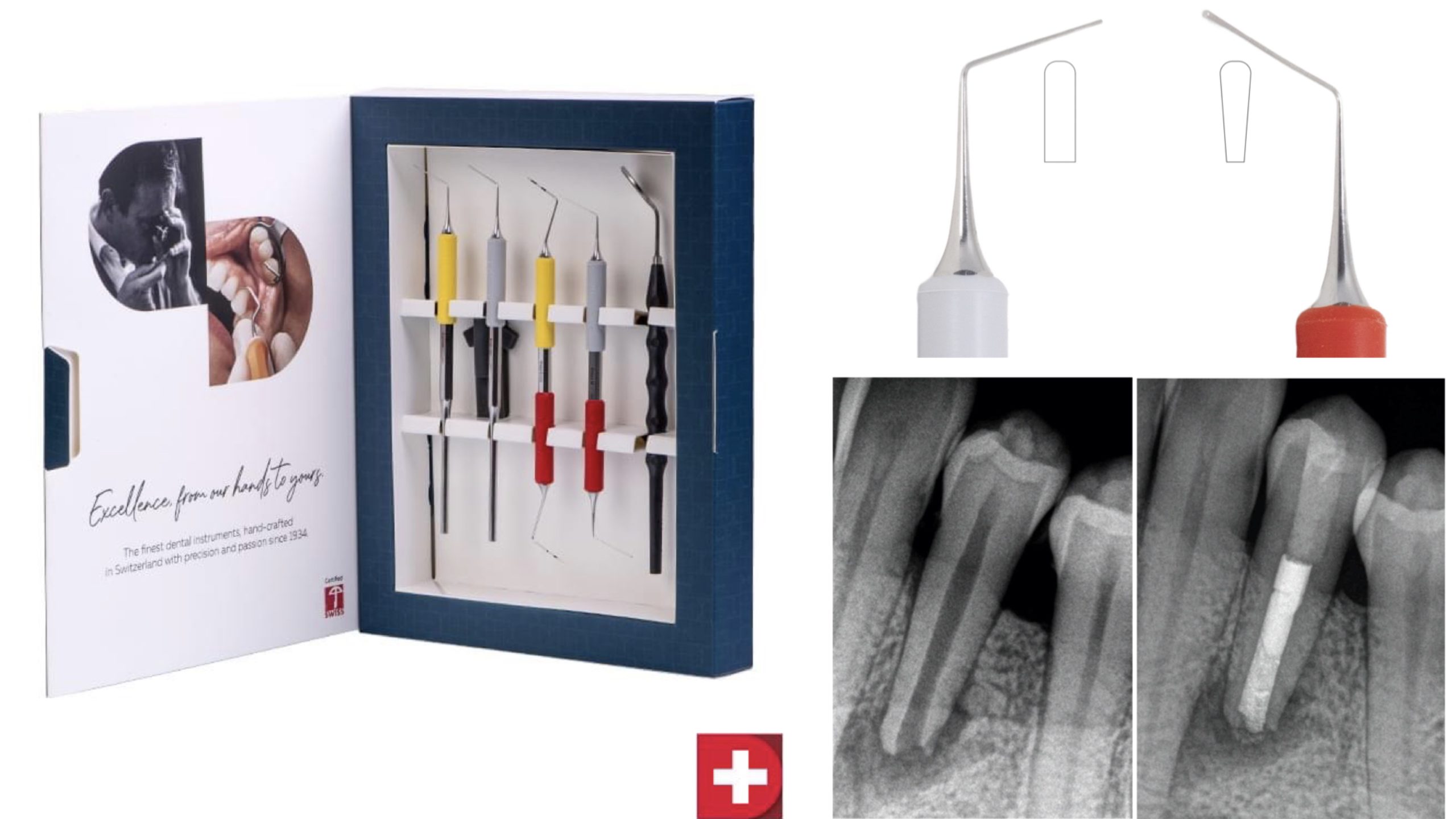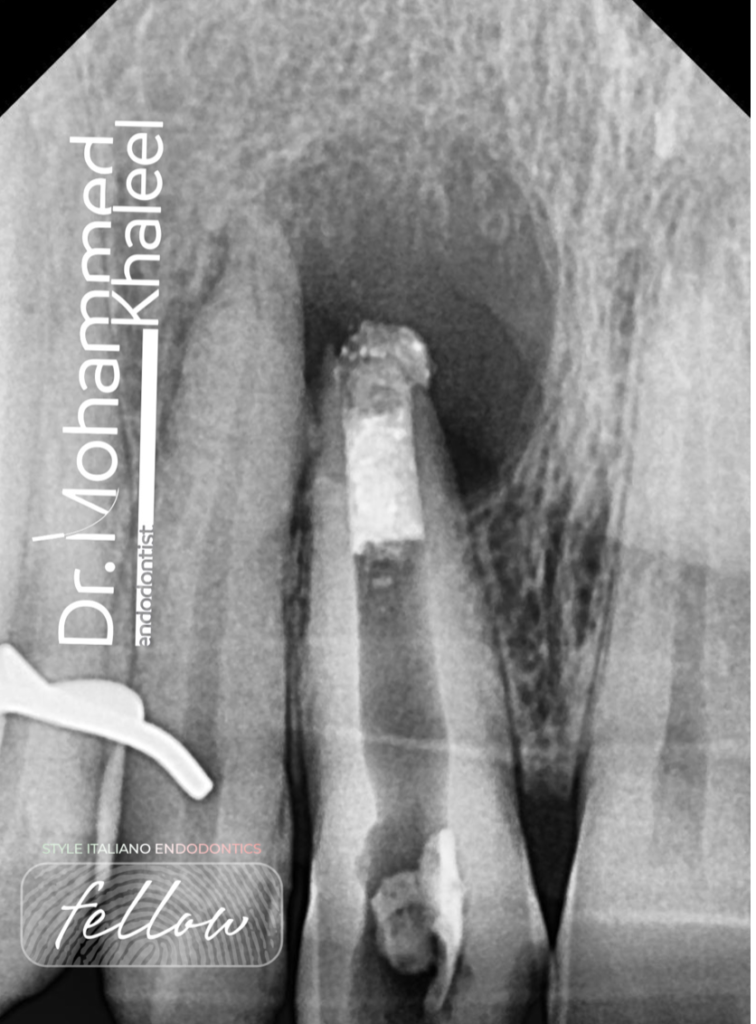
MTA apical plug
02/09/2023
Fellow
Warning: Undefined variable $post in /var/www/vhosts/styleitaliano-endodontics.org/endodontics.styleitaliano.org/wp-content/plugins/oxygen/component-framework/components/classes/code-block.class.php(133) : eval()'d code on line 2
Warning: Attempt to read property "ID" on null in /var/www/vhosts/styleitaliano-endodontics.org/endodontics.styleitaliano.org/wp-content/plugins/oxygen/component-framework/components/classes/code-block.class.php(133) : eval()'d code on line 2
MTA has several desirable properties that makes it an excellent choice for apical plug formation .
Firstly , biocompatibility to the surrounding tissues . This is crucial for achieving successful healing .
Secondly , MTA has sealing capability when properly placed and condensed , it creates a tight seal , prevent the ingress of bacteria and contamination of the root canal system .
Moreover MTA has a bioactive nature . It can stimulate the deposition of mineralised tissue , aiding in the regeneration of the periapical area and formation of apical barrier.
MTA has been shown to be a very effective root filling material for sealing immature root canals with open apices that could otherwise impose technical challenges in obtaining adequate obturation .
MTA has ability to facilitate periradicular healing by inducing hard tissue formation. But in some cases with wide open apices , adequate condensation of MTA is difficult to achieve as the material may get extruded beyond the apex . Therefore an apical matrix is used for the controlled placement of MTA to a desired level . Various biocompatible materials have been tried as apical matrix .
Therefore , present case reports highlight the nonsurgical retreatment of upper central incisor with open apex and large periapical radiolucencies using collagen sponge , acts as a scaffold to prevent MTA extrusion .
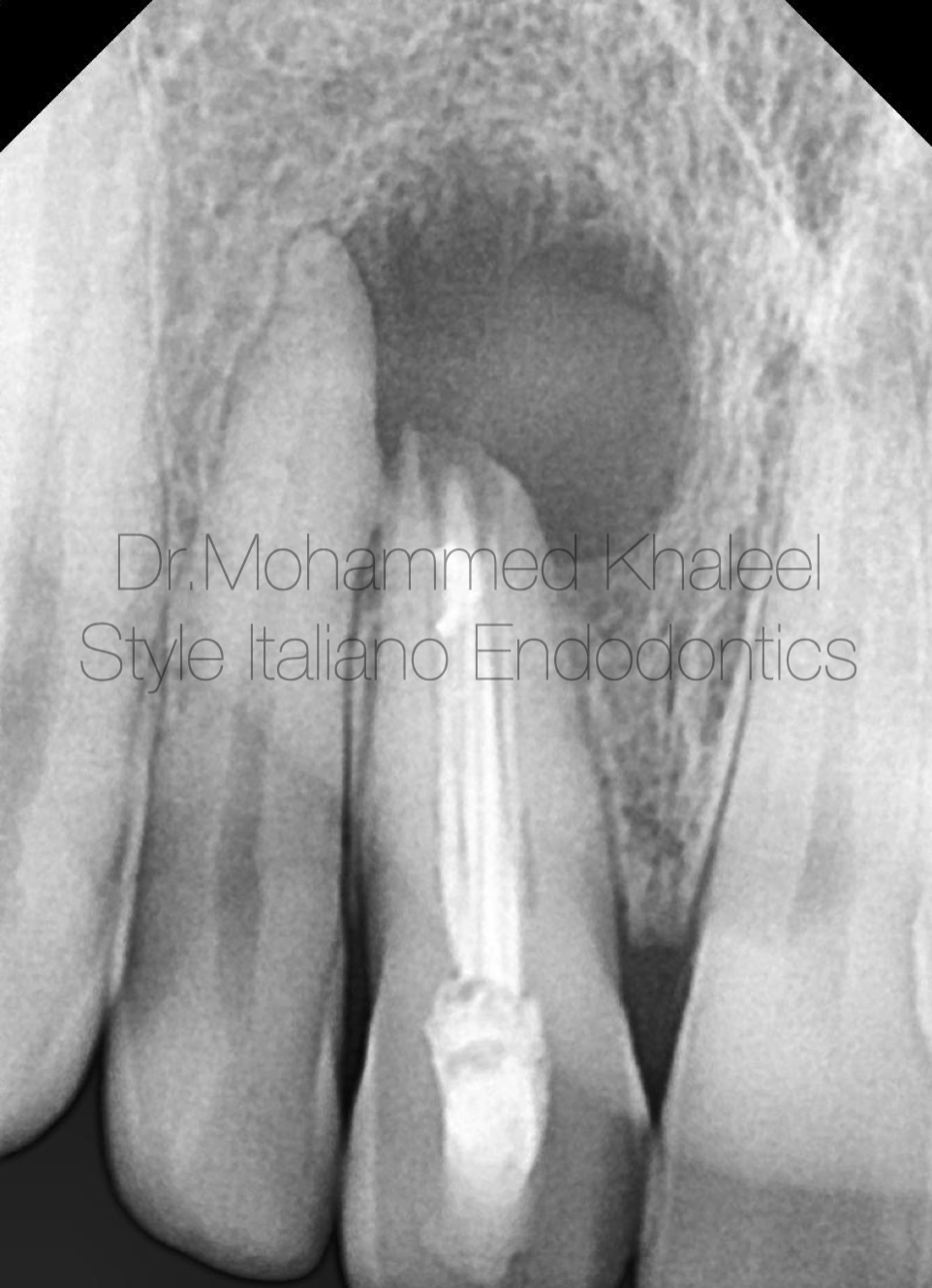
Fig. 1
A 42 year male patient reported with chief complaint of a discoloured right central incisor . History revealed that the tooth previously root canal treated before 8 years .
Radiographic examination revealed an apical resorption and wide open apex with large radiolucent area in proximity of the apex of the tooth .
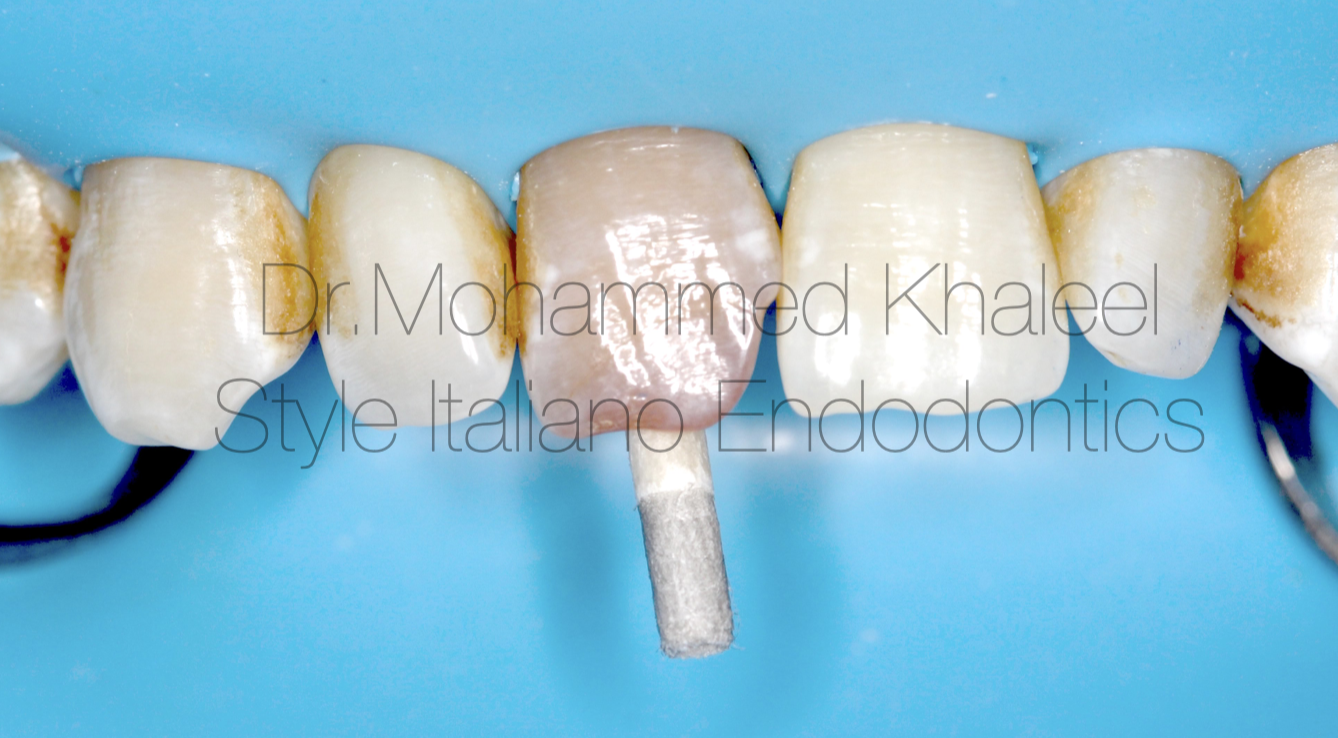
Fig. 2
Isolation with rubber dam and access opening was done under local anaesthesia .
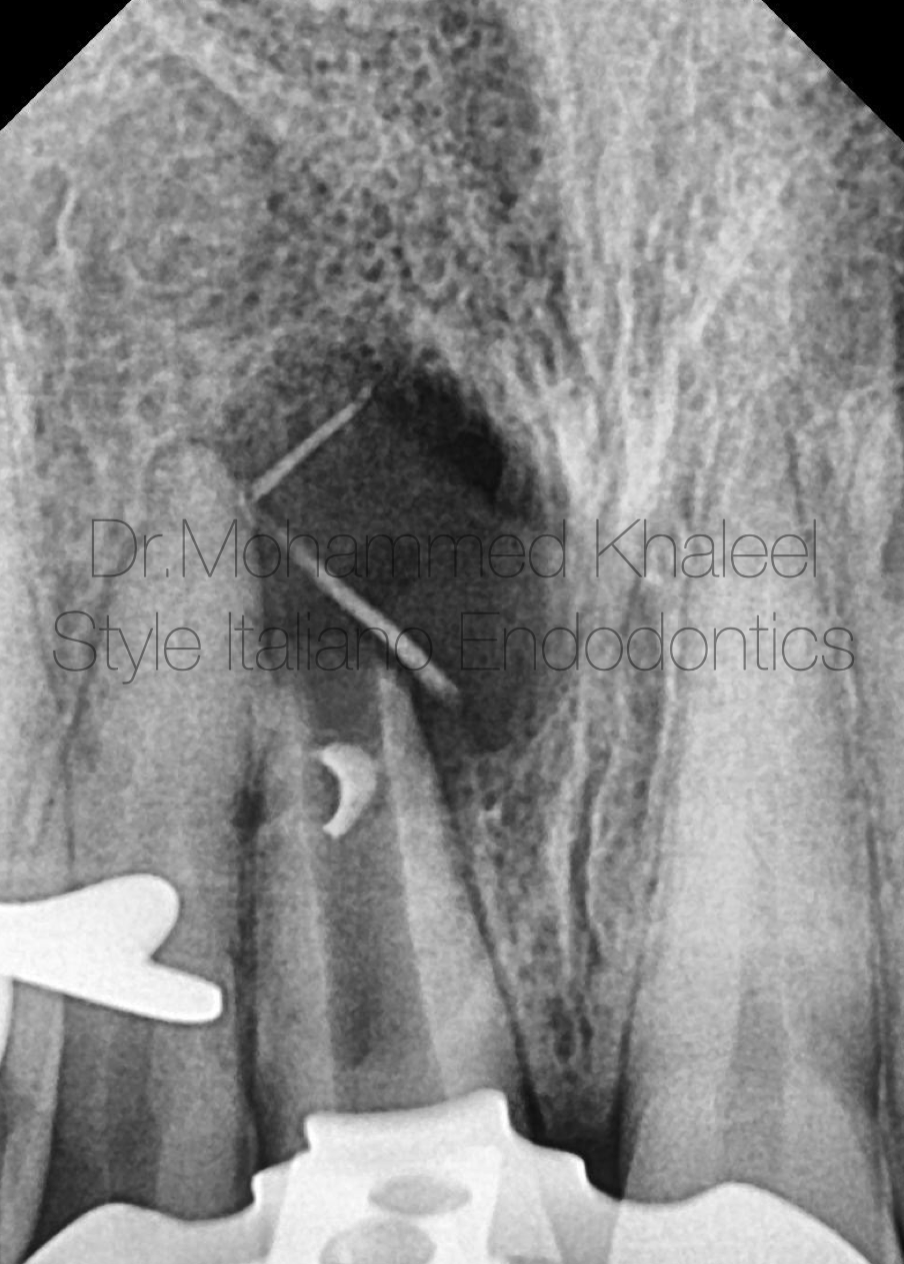
Fig. 3
During gutta percha removal one of the accessory gutta percha was extruded beyond the apex .
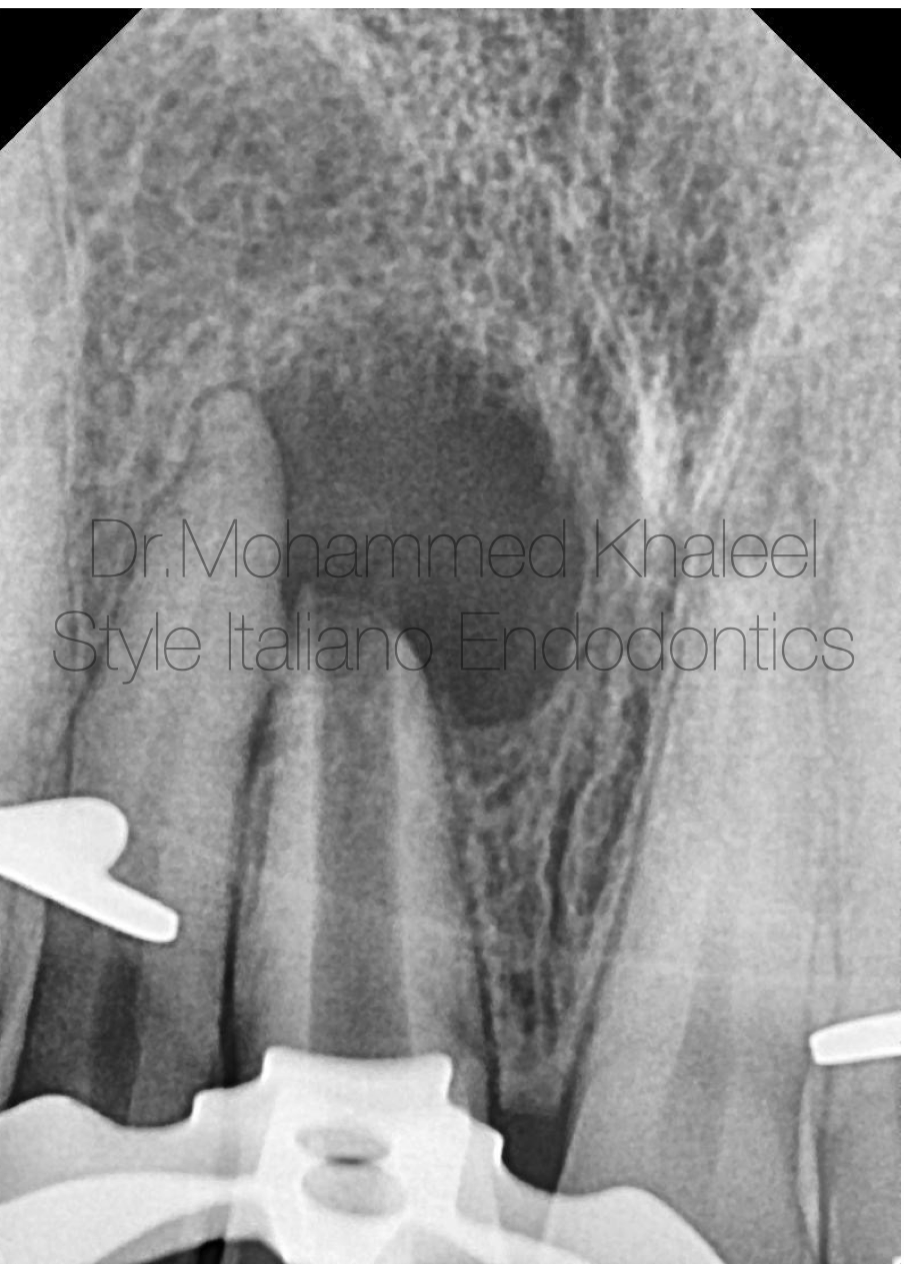
Fig. 4
The canal was cleaned and over extruded gutta percha removed.

Fig. 5
By curving H file at the end (like small hook ) , then going beyond the apex and slightly rotated to catch the extruded gutta percha.
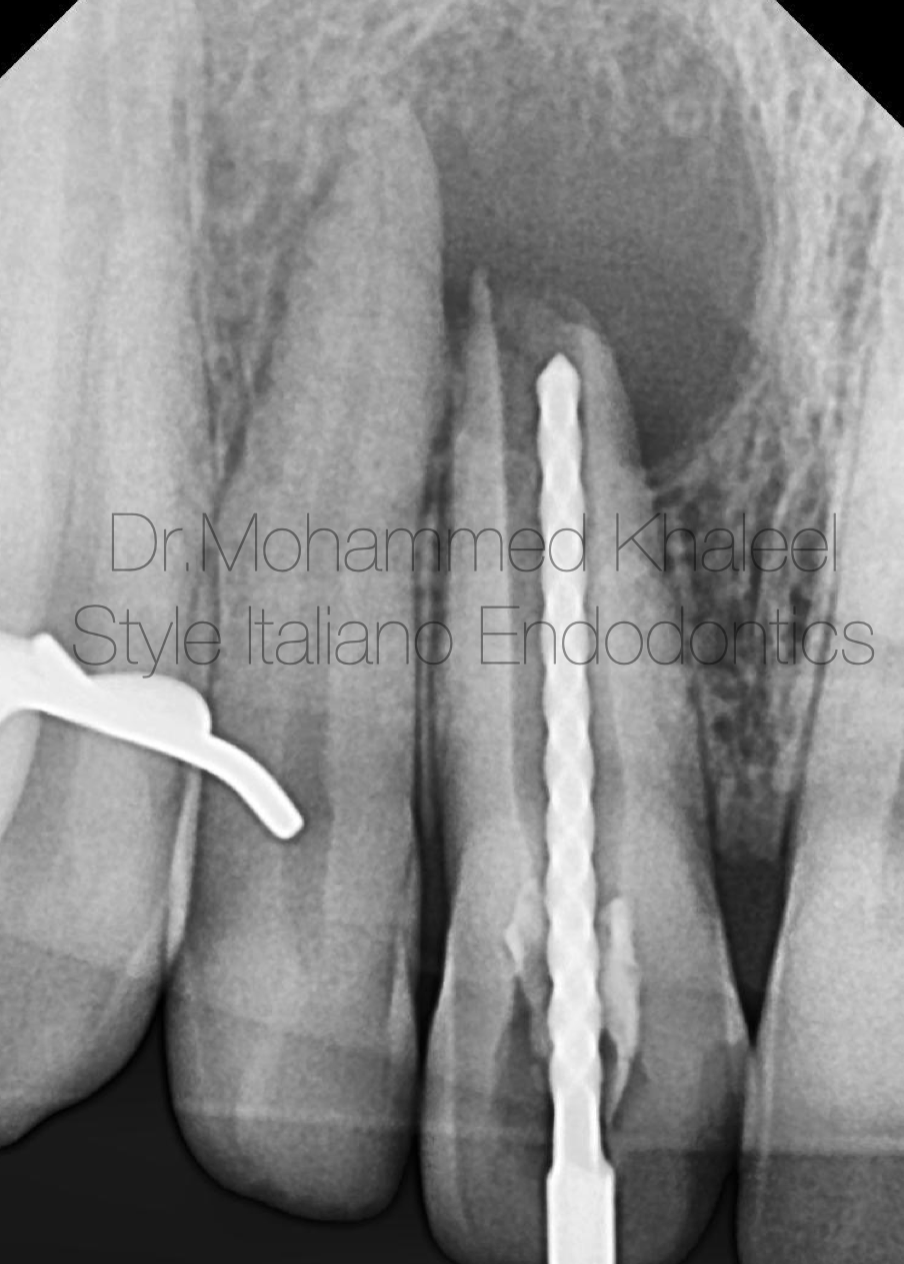
Fig. 6
Periapical radiograph was taken to determine the working length .the root canal was lightly cleaned with hand file under irrigation with 5.25% NaOCl . The root canal was then dried with sterile paper points . Calcium hydroxide was placed in the root canal , and the patient was recalled after two weeks.
Two week later , the tooth was again isolated under rubber dam , the calcium hydroxide was removed by hand instrumentation , and irrigation was done with 5.25% NaOCl and EDTA17% , the root canal was dried with paper points.
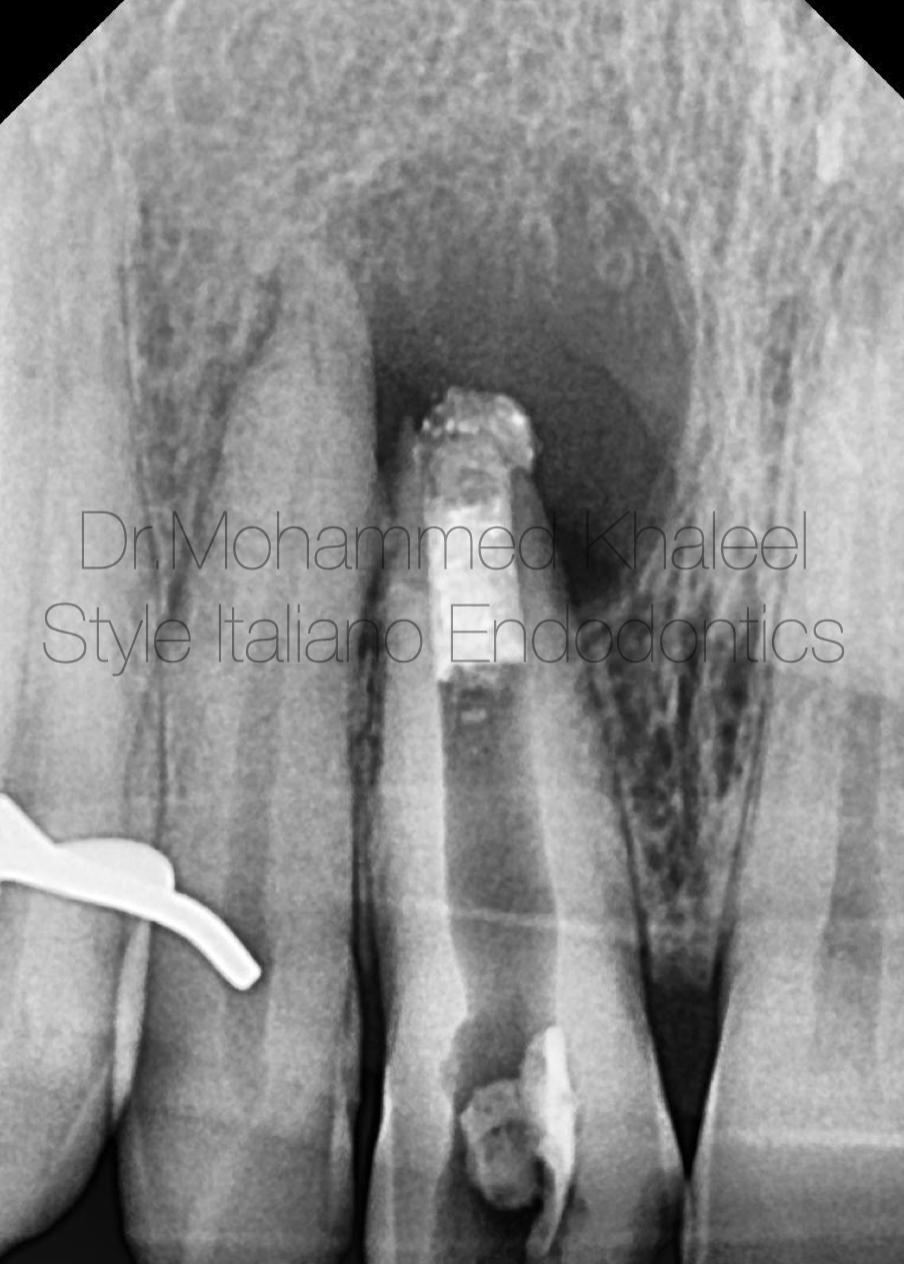
Fig. 7
Collagen sponge used to act as artificial barrier , then MTA placed in the canal by MAP one then condensed by large pepper point .
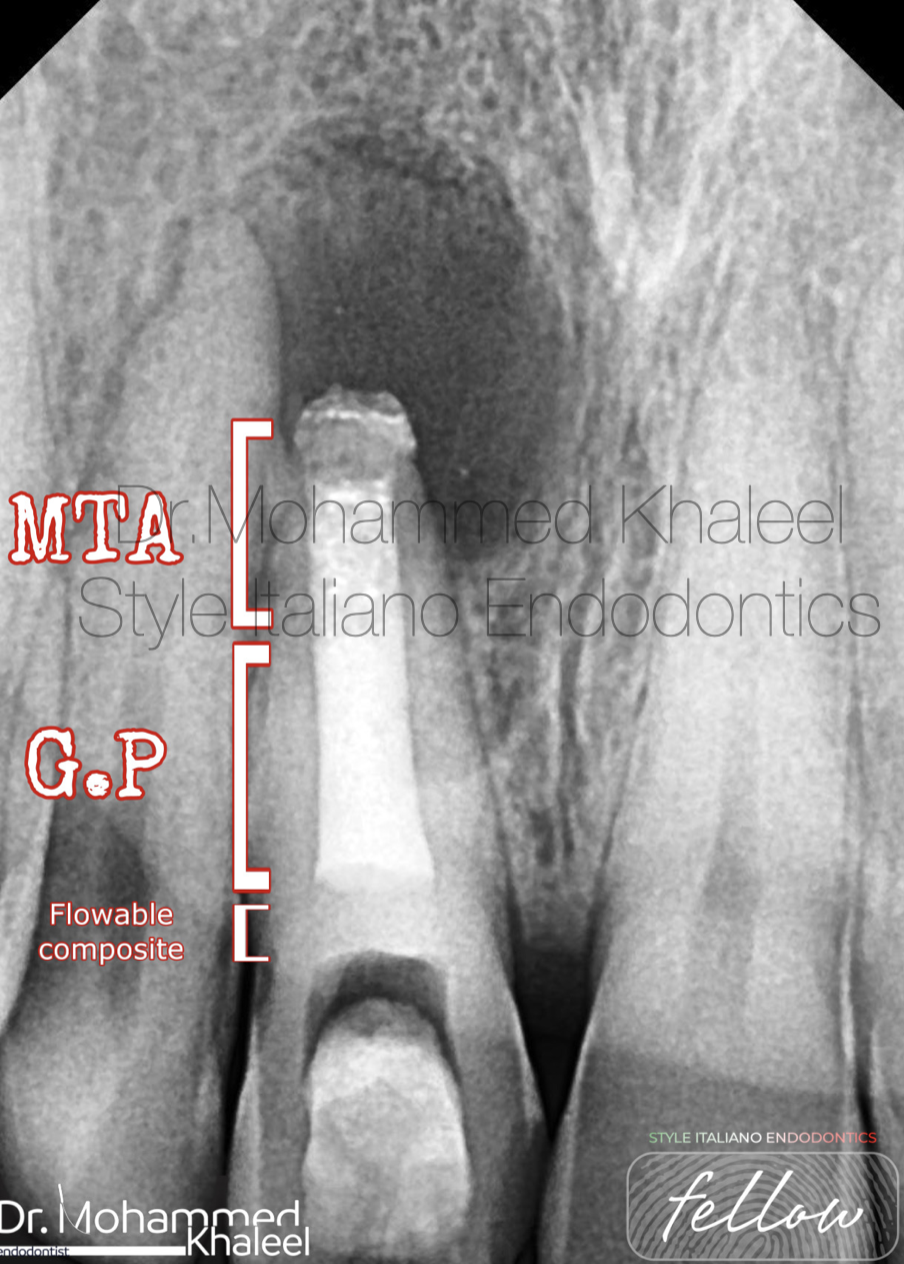
Fig. 8
The remains part of the canal was filled by injectable gutta percha .
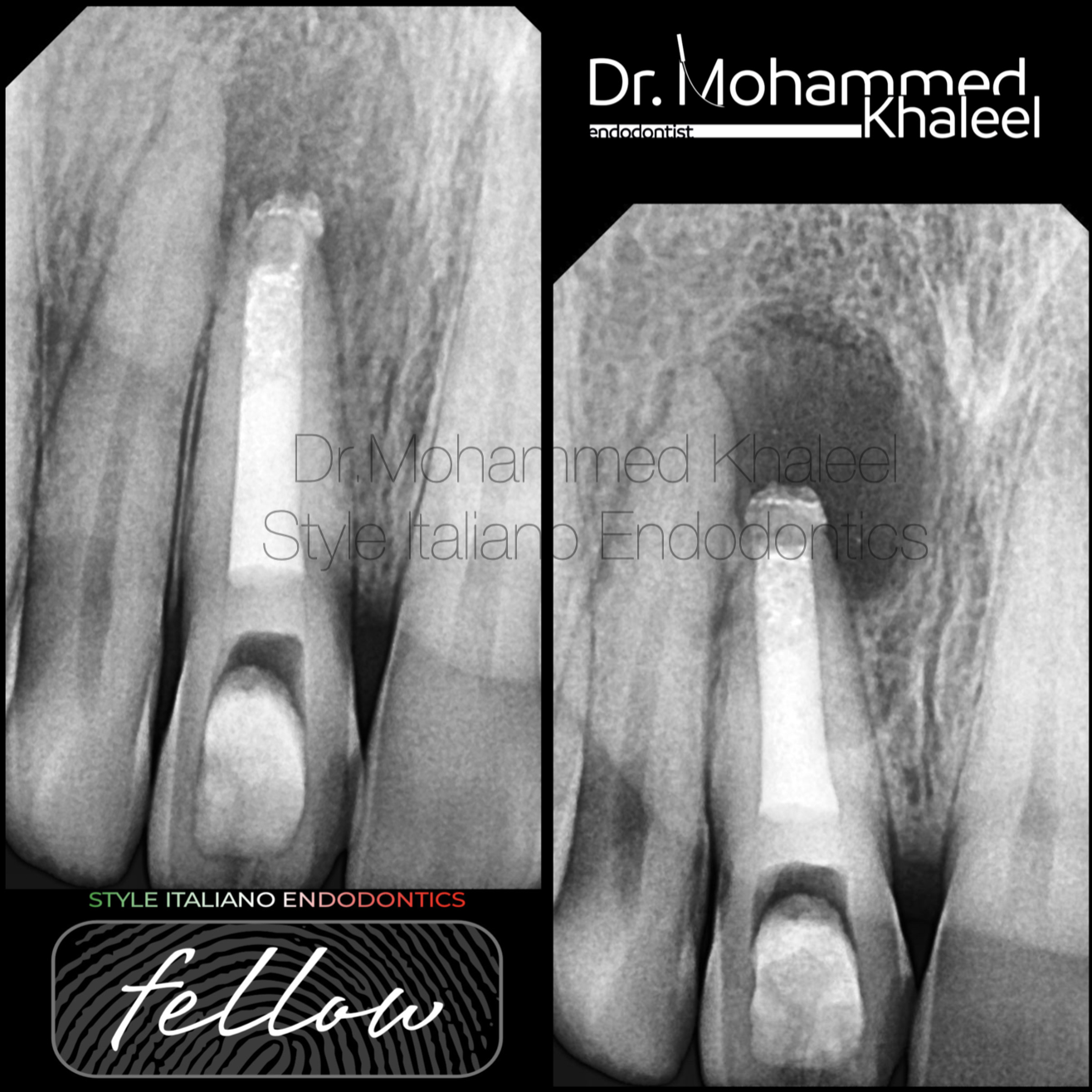
Fig. 9
A 8 months follow-up revealed healing and bone formation .
Conclusions
The major problem in cases of a wide open apex is the need to limit the material , thus avoiding the extrusion of a large amount of material into the periodontal tissue .
Using a matrix avoids the extrusion of the material into the periodontal tissues , reduces leakage in the sealing material and allows favorable response of the periodontal tissues .
Bibliography
1-simon S , Hilliard F , Berdal A , Machtou P. The use of mineral trioxide aggregate in one visit apexification treatment : A prospective study. Int Endod J. 2007;40:186-97.
2-Holden DT , SchwartzSA, Kirkpatrik TC, Schindler WG. Clinical outcomes of artificial root end barriers with mineral trioxide aggregate in teeth with immature apices.J Endod.2008;34:812-7.
3-Giuliani V , Baccetti T, Pace R, Pagavino G. The use of MTA in teeth with necrotic pulps and open apices. Dent Traumatol.2002;18:217-21.
4-Rafter M. Apexification :A review.Dent traumatol.2005;21:1-8.
5-Tait CM, Ricketts DN, Higgins AJ. Weakened anterior roots-intraradicular rehabilitation. Br Dent J.



